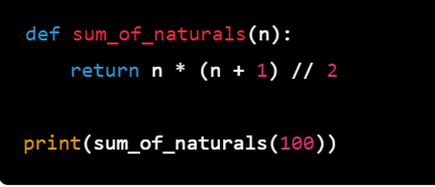As the world becomes more dependent on technology, the environmental impact of computing has become a major concern.
Data centers, networks, and the devices we use to access the internet consume a significant amount of energy and contribute to greenhouse gas emissions, pollution, and e-waste.
Data centers contribute significantly to the impact on the environment, with global electricity usage at a shockingly high 220 -320 terawatt-hours (TWh) in 2021. This energy consumption is set to rise, driven by emerging digital technologies such as blockchain, metaverse, and machine learning.
The carbon footprint of digital technologies accounts for around 4% of global greenhouse gas emissions, which is equal to the aviation industry’s emissions.
Also, the production and disposal of devices contribute to electronic waste or e-waste, which can release harmful chemicals into the environment.
According to the Global E-waste Monitor 2020, the world generated 53.6 million metric tons of e-waste in 2019, and this is projected to increase to 74.7 million metric tons by 2030.
Green coding, a sustainable approach to software development and engineering, could serve as a solution to these problems.
This article explores the best practices of green coding that developers and/or organisations should adopt.
What is Green Coding
Green coding refers to the practice of writing code and developing software with a focus on minimising the environmental impact of technology. This can include various strategies such as optimising code for energy efficiency, using sustainable development practices, and designing software that encourages sustainable behaviors.
In essence, green coding seeks to reduce the carbon footprint of software development and technology use, recognising the role that technology plays in contributing to climate change.
By adopting sustainable practices, developers and organisations can reduce their energy consumption and carbon emissions, helping to mitigate the environmental impact of technology.
Some examples of green coding practices include using sustainable software and reusing code.
Ultimately, green coding is about creating technology that is both innovative and sustainable, helping to build a more sustainable future for all.
3 Pillars of Green Coding
The three pillars of green coding are efficiency, sustainability, and environmental responsibility.
1. Efficiency
Writing code that is efficient and optimised for performance is a key aspect of green coding.
This involves refactoring code, writing efficient algorithms that run quickly and reduce resources usage, and optimising code for performance.
Below is an example of efficient code in Python to find the sum of the first N natural numbers:

And here is a less efficient version:

While both pieces of code produce a similar result, the first version is greener than the second version.
2. Sustainability
Green coding focuses on creating software that is sustainable.
Sustainable software is designed to be maintained, supported, and updated over the long term, while minimising the impact on the environment and society.
Here are a few examples of sustainable software:
- Open-source software: Open-source software is free and publicly available, making it more accessible to a wider range of people. This also makes it easier to maintain and update, as there is a large community of developers working on the project.
- Cloud-based software: Cloud-based software can reduce the carbon footprint of IT by reducing the need for physical servers and the energy consumption associated with running and cooling them.
- Low-power devices: Some software, such as mobile apps and IoT devices, are designed to run on low-power hardware, reducing their energy consumption and environmental impact.
- Recyclable software: Recyclable software is software that is designed to be easily replaced with newer, more efficient versions, reducing the need for new hardware purchases and the associated waste.
- Accessibility software: Accessibility software, such as screen readers and text-to-speech tools, makes technology more accessible to people with disabilities, promoting inclusivity and sustainability in the long term. More websites are trying to ensure compliance with Web Content Accessibility Guidelines (WCAG).
On top of using and creating sustainable software, other sustainability practices involve reusing existing code and libraries, using cloud computing, and adopting eco-friendly data centers that operate using renewable energy sources.
3. Environmental responsibility
Green coding involves taking a proactive approach to reducing the environmental impact of computing and promoting sustainability.
This includes minimising the energy consumption of data centers, reducing the carbon footprint of the network infrastructure, and minimising the environmental impact of the devices that are used to access the internet.
It also involves being mindful of the lifecycle of software and its impact on the environment, from development to disposal.

Best Practices of Green Coding
This section covers seven best practices of green coding.
For developers considering a greener code, you may need to combine a few or all of these practices for a more sustainable software or application.
#1 Minimising resource usage
Writing code that minimises resource usage is an important aspect of green coding.
This includes practices such as reducing the amount of data that is transferred over the network, reducing the amount of memory that is used, and optimising the use of processor time.
For example, using data compression algorithms reduce the amount of data that needs to be transferred, which can reduce the energy consumption of data centers and network infrastructure.
#2 Reusing code

Reusing existing code, libraries, and modules can help reduce the amount of code that needs to be written and tested, which can reduce energy consumption and waste.
When reusing code, it is important to ensure that the code is efficient and well-maintained and that it meets the requirements of the new application.
#3 Writing efficient algorithms
Writing algorithms that run quickly and use fewer resources is another key aspect of green coding.
This can include practices such as reducing the number of operations that are performed, avoiding the use of inefficient algorithms, and optimising the use of data structures.
For example, using algorithms that have a low time complexity, such as linear search or binary search, can help reduce the amount of processing time required for a given task.
#4 Using cloud computing

Cloud computing reduces the energy consumption of data centers and the carbon footprint of computing by allowing organisations to run their applications and store their data in shared data centers, rather than in their own facilities.
This reduces the energy consumption of data centers, as well as the energy consumption of the network infrastructure that connects them.
#5 Automating tests
Automated tests reduce the time and energy required for manual testing and debugging, as well as help ensure that code is correct and efficient.
The tests can run continuously in the background, providing early feedback on code changes and helping to identify performance issues before they become problems.
#6 Optimising for performance
Optimising code for performance is another important aspect of green coding.
This can include practices such as reducing the number of network requests, reducing the size of data structures, and using caching strategies to reduce the amount of processing time required for a given task.
For example, using caching algorithms can help reduce the number of network requests required to retrieve data, which can reduce the energy consumption of the network infrastructure.
#7 Adopting eco-friendly data centers
Using data centers that are powered by renewable energy sources, such as wind or solar power, can help reduce the carbon footprint of computing.
By using renewable energy sources, data centers can reduce their reliance on fossil fuels and reduce their greenhouse gas emissions.
This helps organisations achieve their sustainability goals and contribute to the broader goal of reducing the environmental impact of computing.
Benefits of Green Coding
Green coding addresses a critical need for sustainable development in the technology industry.
Let’s explore the ways green coding contributes to a more sustainable and greener future.

#1 Reduces environmental impact
Green coding practices such as optimising code for energy efficiency, using sustainable development practices, promoting the use of eco-friendly materials, and minimising waste are some ways that reduce environmental impact.
Developers can also design software that encourages sustainable behaviors such as carpooling, taking public transportation, or walking. Other energy-efficient behaviors include reducing paper usage, promoting recycling, etc.
#2 Reduces energy consumption
Green coding helps reduce the energy consumption of data centers and the network infrastructure.
By optimising code, organisations can reduce the number of processor executions and memory usage, resulting in faster response times while minimising energy consumption. This eco-designed coding approach not only enhances overall efficiency but also reduces the organisation’s energy consumption.
Designing hardware to be more energy-efficient on top of code optimisation helps reduce energy consumption by using processors that consume less power.
#3 Economic benefits
Software that requires less computing power help companies reduce their energy bills. Green coding leads to faster processing times and reduced resource usage which leads to cost savings and increased productivity.
As customers grow to be more environmentally conscious, they are attracted to companies that adopt green practices. This leads to increased revenue for companies that are seen as more socially responsible.
Governments also offer grants and incentives to companies to encourage the adoption of sustainable practices to advance environmental sustainability.
#4 Meet consumer demand
Consumers are becoming increasingly aware of the environmental impact of technology and are demanding products and services that are sustainable.
Green coding helps to meet this demand by creating software that is efficient, sustainable, and environmentally responsible.
Meeting consumer demand for sustainable software involves education, promotion, and design practices that emphasise the environmental benefits of green coding.
Companies may emphasise the environmental benefits of their software and appeal to consumers. This includes promoting the energy efficiency of an application, highlighting the use of renewable energy sources, offering eco-friendly alternatives, and using low-energy programming practices.
Sustainable software can be designed to encourage responsible user behaviors such as recycling or adopting energy conservation habits when using the product.
Conclusion
Green coding is an important step towards a more sustainable future, where technology can be used to benefit humanity without sacrificing the health of our planet.
It is necessary for developing sustainable software and addresses a critical need for sustainable development in the technology industry.
By promoting environmentally-friendly practices and reducing the carbon footprint of technology, we can help to mitigate the impacts of climate change while still reaping the benefits of technological advancement.
In addition, green coding can also have economic benefits for organizations, reducing energy costs and improving the sustainability of business operations. Overall, the adoption of green coding practices can lead to a more sustainable future for everyone.
Websparks is a Web Development Company
Websparks is a web development company based in Singapore that offers digital services for our clients.
At Websparks, we are committed to exercising sustainable practices that include green coding, promoting renewable energy, and reducing e-waste.
Be it in web development, web design, or applications, we are constantly working towards providing innovative solutions that reduce our environmental impact and carbon emissions.
Check out our services.
Consult us today on how we can help you achieve your goals for your digital projects.





